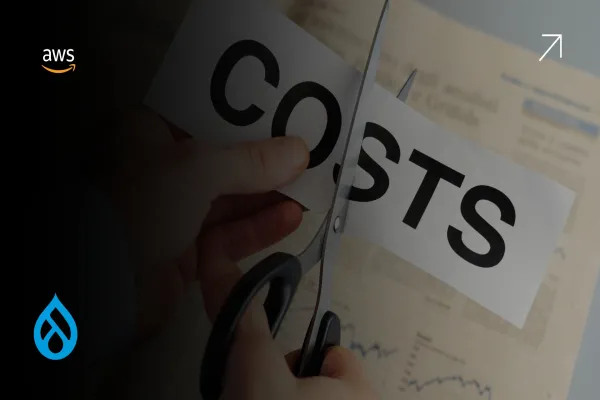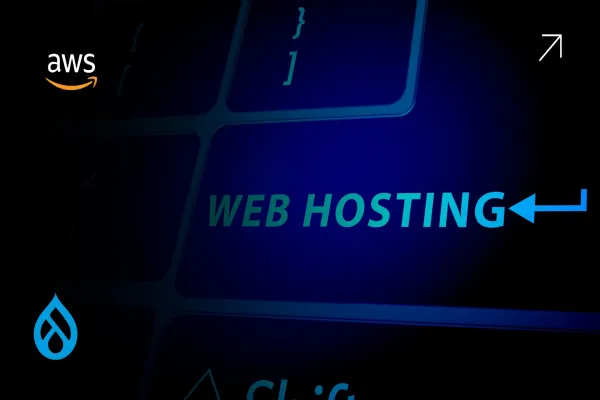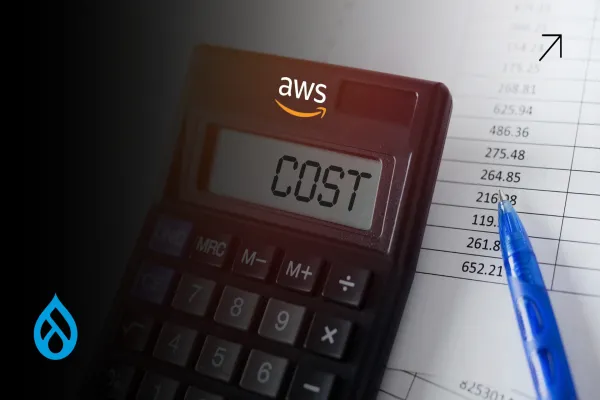You’ve done the hard part, and moved your Drupal site to AWS. On paper, it promised lower infrastructure costs, high flexibility, and faster performance.
So why does it feel like your hosting budget is slowly bleeding out?
Here’s the blunt truth: Drupal + AWS setups are often overbuilt, under-optimized, and expensive by default. Most of the cost doesn’t come from what you need, it comes from what’s not being managed.
This isn’t a scare tactic. It’s a solvable problem.
If your organization is spending more than it should on cloud infrastructure, here’s a focused, realistic 50% savings plan to stop the leak without downgrading performance or taking your developers offline.
First, Why Drupal + AWS Wastes Money (Quietly)
The most common issue isn’t poor decisions. It’s inertia.
When teams launch a Drupal + AWS environment, they often select instance types, storage options, and configurations that “just work.” The problem is, those early decisions stick. Months later, you're still running oversized EC2 instances, duplicating environments, and paying for unused capacity even though the site’s requirements are now totally stable.
It’s not your fault. But it is costing you.
Most teams overspend by 30–60% simply because their Drupal + AWS setup never evolved past Day 1.
The 50% Savings Plan (No Compromises Required)
This is the plan we use to help clients cut their Drupal + AWS bills in half. It works because it doesn’t ask you to choose between savings and site reliability it gives you both.
Let’s walk through it.
1. Switch to Smarter EC2 Instances
Most Drupal sites run on far more compute power than they need. If you’re using m5.large or c5.large for a marketing or content-driven site, chances are it’s overkill.
Modern t4g instances (ARM-based) can handle the same workloads at a significantly lower cost, often 40% cheaper. And they’re fully supported by PHP and Drupal.
Set up a testing environment and run a side-by-side performance check. For many Drupal + AWS workloads, the results are nearly identical minus the cloud bill.
2. Auto Scale, Even If You Think You Don’t Need To
Not every site gets viral traffic spikes. But nearly every site has traffic patterns.
If your Drupal + AWS setup runs 24/7 at the same capacity, even during nights and weekends, you’re leaving money on the table. Auto Scaling isn’t just for massive spikes. It’s for right-sizing your infrastructure in real time.
Set thresholds based on CPU, network in/out, or request count. Let AWS remove unused capacity automatically. Less idle time = less waste.
3. Migrate Media and Static Assets to S3 + CloudFront
One of the most silent but constant cost drains in a Drupal + AWS stack is serving static files, including, images, documents, scripts- from EC2.
EC2 is for dynamic processing. Static delivery is better (and cheaper) through S3 and CloudFront. You’ll reduce server load, bandwidth costs, and latency, all while paying pennies per gigabyte.
For Drupal, use the S3FS module to offload files without breaking workflows. Bonus: it makes scaling and caching easier, too.
4. Optimize (or Replace) Your RDS Configuration
RDS is a high-value tool, but it’s also a frequent budget killer when misconfigured. Many Drupal sites use more storage, IOPS, and instance size than they actually need.
Look at your average CPU usage and disk throughput. If it’s consistently low, you're overpaying. Downsize the instance or switch to Aurora Serverless, which automatically scales with demand.
Also, clean up old snapshots. Those daily backups from last year? Still costing you.
5. Eliminate Always-On Non-Production Environments
If your dev, test, and staging environments are running 24/7, you’re paying for development cycles while your team sleeps. Multiply that by three environments and you’re looking at thousands per year- all wasted.
Use scheduled Lambda functions or simple scripts to stop and start EC2 instances during business hours only. A 12-hour runtime reduction saves you up to 50% instantly, no code changes, no new tools.
This is one of the fastest wins in the Drupal + AWS ecosystem.
6. Rethink Your Caching Strategy
No cache? You’re paying Drupal to do the same thing over and over.
Object caching (Redis or Memcached) and page caching (Varnish or CloudFront) reduce the load on both EC2 and RDS. The more cache hits you get, the fewer expensive resources you consume.
Think of caching as a permanent discount on compute, and make it a priority in your Drupal + AWS setup.
7. Set Budgets. Track Everything.
AWS gives you the tools. You just need to use them.
Create budget alerts for your total spend, per environment. Use tagging to track usage by function (e.g., frontend, backend, search). Monitor logs and metrics, but don’t over-collect. CloudWatch charges can balloon fast when left unchecked.
Drupal + AWS doesn’t have to be unpredictable. It just needs to be visible.
Let’s Fix It — Together
This isn’t just theory. It’s a tested, proven method to reduce your Drupal + AWS costs, sometimes by more than 50%. But we also know that most teams don’t have time to audit every config, benchmark new instances, or build automated shutdown schedules.
That’s why we offer a Drupal + AWS Cost Audit.
We dive deep into your setup, identify the inefficiencies, and provide a custom roadmap to savings with clear, actionable steps. You’ll know exactly what’s draining your budget and how to stop it. Fast.
Final Word
Your Drupal hosting isn’t doomed. It’s just not tuned.
If your Drupal + AWS bill has been creeping up, or you’ve simply accepted high costs as the price of performance; it’s time to rethink that.
You don’t need to start over. You need a better plan. And now, you have one.
Let’s cut your cloud spend. Let’s make Drupal + AWS finally work for your business, not against your budget.





